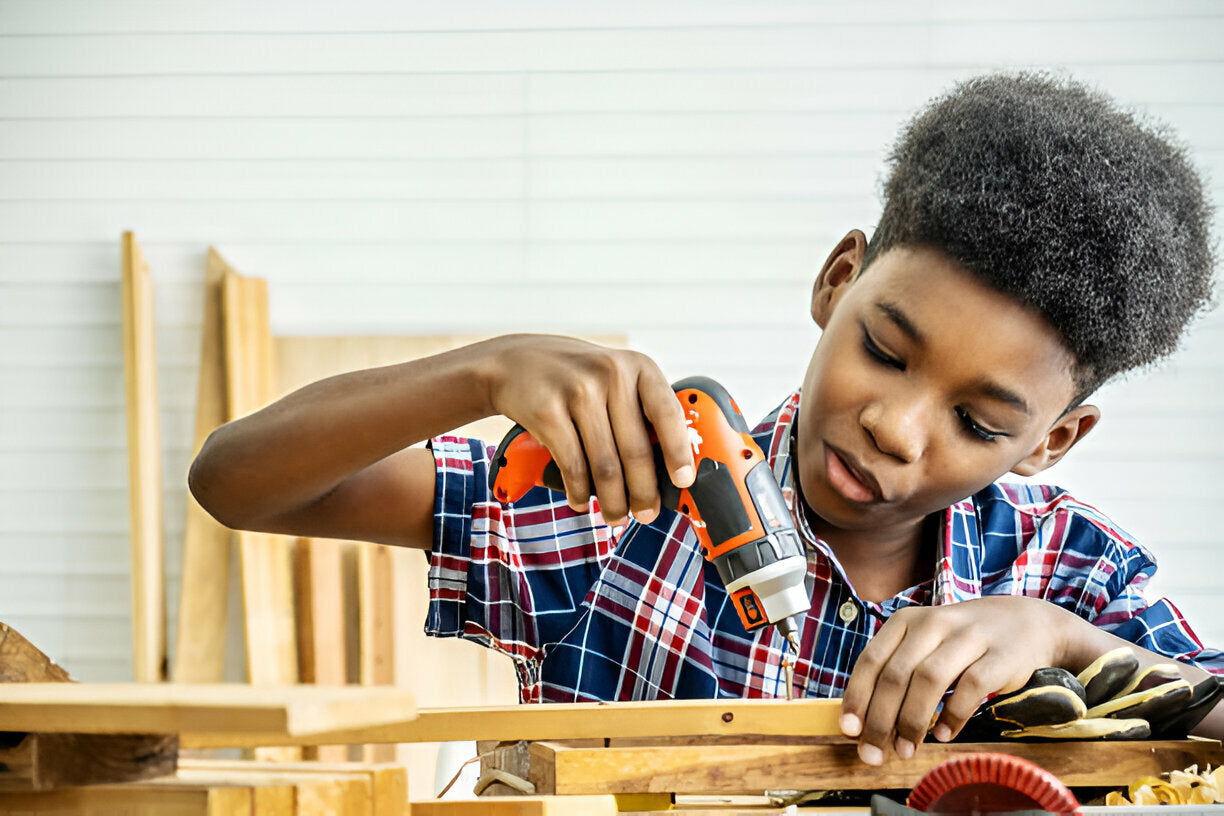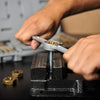
Kids’ Tool Kit Accessories: What Should Be Inside
Introducing kids to the world of DIY projects and building can be both fun and educational. A kid's tool kit is a fantastic way to foster creativity, problem-solving skills, and hand-eye coordination in young ones. But what exactly should be inside a kids' tool kit to ensure they have everything they need for their projects?
In this blog post, we will explore the essential tools and safety equipment that every kid's tool kit should contain. Let's dive in and discover how to create the perfect tool kit for your little DIY enthusiast!
Understanding the Importance of a Kids' Tool Kit
A kids' tool kit serves as a gateway to a world of imagination, creativity, and hands-on learning. It offers numerous benefits for children, helping them develop essential skills and qualities that will benefit them throughout their lives. Here are some key points to understand the importance of a kids' tool kit:
-
Promoting Creativity: A tool kit allows children to explore their imagination and turn their ideas into reality. By providing them with the tools they need, kids can engage in various DIY projects and unleash their creativity.
-
Developing Problem-Solving Skills: Using tools requires problem-solving skills, as children need to figure out how to assemble or fix things. A kids' tool kit encourages critical thinking, spatial awareness, and logical reasoning.
-
Enhancing Hand-Eye Coordination: Manipulating tools and working with different materials helps improve a child's hand-eye coordination. The precise movements required when using tools can strengthen fine motor skills and dexterity.
-
Fostering Independence: Having their own tool kit empowers children to take on projects independently. They learn to plan, execute, and complete tasks on their own, boosting their self-confidence and sense of accomplishment.
-
Building Practical Skills: A kids' tool kit introduces children to basic construction and repair skills. They learn how to use tools safely, measure accurately, and assemble or disassemble objects. These practical skills can be valuable in various aspects of life.
-
Encouraging STEM Learning: STEM (Science, Technology, Engineering, and Mathematics) education is essential for the future. A tool kit exposes children to fundamental concepts of engineering, physics, and math, making learning more engaging and applicable.
-
Teaching Responsibility and Safety: With a tool kit, children learn about responsibility and safety. They understand the importance of handling tools with care, following safety guidelines, and being mindful of potential hazards.
By understanding the significance of a kids' tool kit, parents and educators can provide children with an enriching environment that stimulates their creativity, problem-solving abilities, and practical skills. Now, let's explore the specific tools that should be included in every kid's tool kit.
Basic Tools Every Kids' Tool Kit Should Have
When it comes to assembling a kids' tool kit, it's important to include a set of basic tools that will allow children to tackle a variety of DIY projects. Here are the essential tools that every kid's tool kit should have:
-
Hammer and Nails: A small-sized hammer and a selection of nails are fundamental tools for any tool kit. Children can learn how to drive nails into wood, helping them develop hand-eye coordination and strength.
-
Screwdriver and Screws: Including a screwdriver with interchangeable heads and a collection of screws of different sizes enables kids to practice screwing and unscrewing objects. This skill is essential for furniture assembly, repairing toys, or building simple structures.
-
Measuring Tape: Introducing children to a measuring tape allows them to understand the importance of accurate measurements. They can learn how to measure lengths, widths, and heights, which is crucial for proper fitting and precise construction.
-
Pliers: Pliers are versatile tools that can be used for gripping, bending, and cutting wires or small objects. Including a pair of child-sized pliers in the tool kit helps develop hand strength and manual dexterity.
-
Level: A small bubble level is a useful addition to a kids' tool kit. It helps children learn about balance and alignment when working on projects that require straight lines or even surfaces.
By including these basic tools, children can engage in a wide range of DIY activities, from simple repairs to constructing small structures. These tools not only foster practical skills but also promote problem-solving, patience, and perseverance. Now that we have covered the essential tools, let's move on to discussing the safety equipment that should be included in a kids' tool kit.
Safety Equipment for Kids' Tool Kit
Ensuring the safety of children is of utmost importance when it comes to using tools. Including appropriate safety equipment in a kids' tool kit is essential to protect them from potential hazards. Here are the key safety items that should be included:
-
Safety Goggles: Safety goggles are crucial for protecting children's eyes from flying debris, dust, or any potential splinters. They should fit properly and have clear lenses to provide optimal visibility while working.
-
Work Gloves: Including a pair of work gloves in the tool kit helps protect children's hands from cuts, scratches, or blisters. Opt for gloves that are specifically designed for kids, offering a comfortable fit and allowing them to maintain a good grip on tools and materials.
-
Ear Protection: Some DIY tasks, such as hammering or using power tools, can generate loud noises that may harm children's hearing. Including ear protection, such as earmuffs or earplugs, ensures their ears are shielded from excessive noise levels.
-
Safety Helmet: For projects that involve working at heights or overhead tasks, a safety helmet is recommended. It provides protection against potential head injuries caused by falling objects or accidental bumps.
-
First Aid Kit: While not strictly safety equipment, having a basic first aid kit in the tool kit is essential. It should include adhesive bandages, antiseptic wipes, tweezers, and any necessary medication for immediate treatment of minor injuries.
By including these safety items in a kids' tool kit, parents and educators can instill good safety practices from an early age. It is crucial to teach children how to use safety equipment correctly and emphasize the importance of wearing them during DIY projects.



